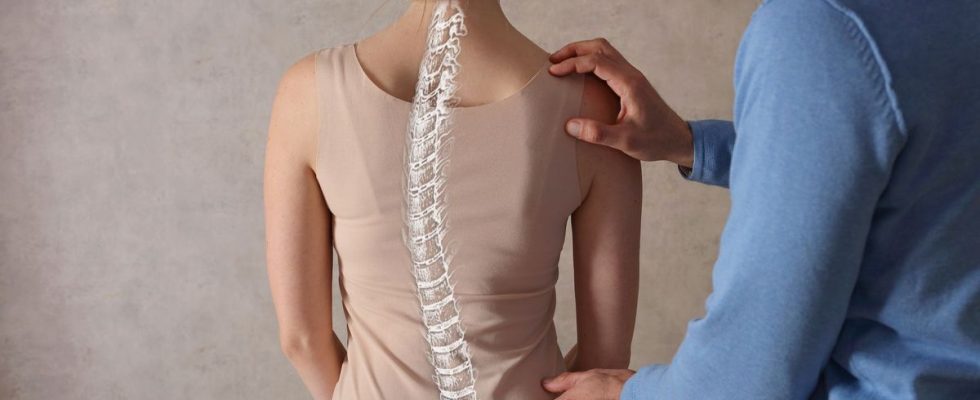Published on
Updated
Reading 2 mins.
in collaboration with
Dr Gérald Kierzek (Medical Director)
Knowing if your back and skeleton are healthy is part of good day-to-day prevention. Do you have doubts about possible scoliosis? How to distinguish a scoliosis from a scoliotic attitude? All the answers.
Taking care of your back and that of your children is important. On this subject, detecting scoliosis or a scoliotic attitude early enough can allow the implementation of a series of solutions to attenuate the effects of this deformation and suffer less….
What is scoliosis?
There scoliosis corresponds to a 3-dimensional permanent spinal deformity : a curvature of more than 10° in amplitude which involves a rotation of one or more vertebrae. This deviation of the column leads to a deformation of the thorax, abdomen and areas close to the spine.
The clinical consequences are aesthetic but not only. These can be painful with spinal pain and sometimes neurological complications. The risk of bone deformation and the loss of quality of life have a significant impact on self-image, particularly in women.
What is the difference between scoliosis and scoliosis?
Dr. Gérald Kierzek, medical director of Doctissimo, however, provides us with a clarification. During screening, it is also common to find on your teenager, for example, what is called a scoliotic attitude, which is not scoliosis: “Unlike scoliosis which is a permanent anatomical deformity, the scoliotic attitude is a reducible formation which does not involve rotation of the vertebrae. Standing, we can see for example a deformity which disappears when lying down”
Three reasons can cause this scoliotic attitude in children and adolescents, in particular:
- Unequal length of the limbs;
- Asymmetry of the pelvis;
- Or simply pain (in the knee for example), related to growth.
Once detected, this scoliotic attitude can be corrected by rehabilitation, orthopedic insoles, and/or appropriate physical activity.
A simple screening with your doctor
Scoliosis, scoliotic attitude or other, it is therefore essential to be tested by your doctor, who will ask you to bend over to touch the ground. “It is simply a screening, if the doctor perceives something, other additional examinations will be requested”. This international awareness day is there to remind us.
